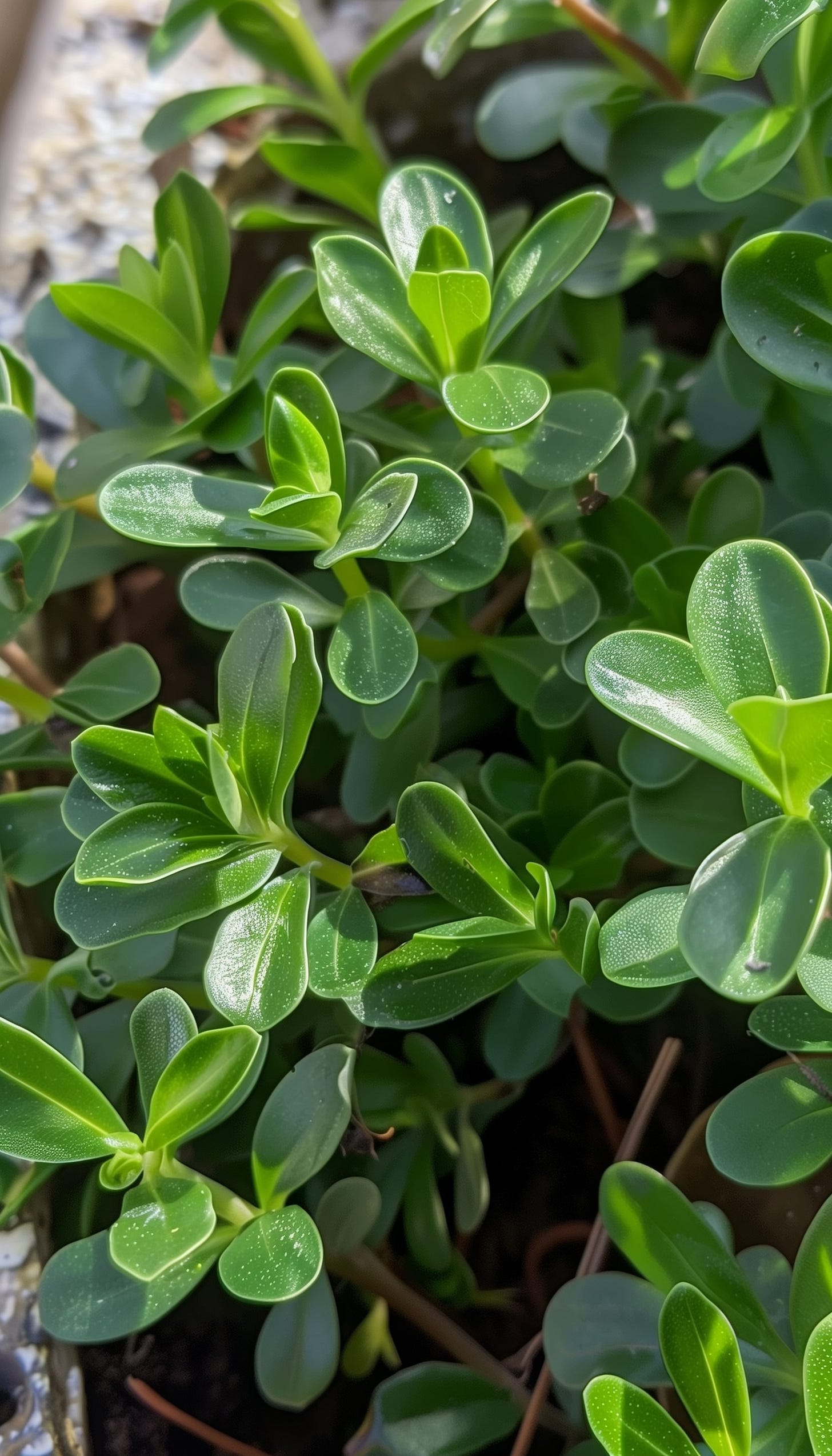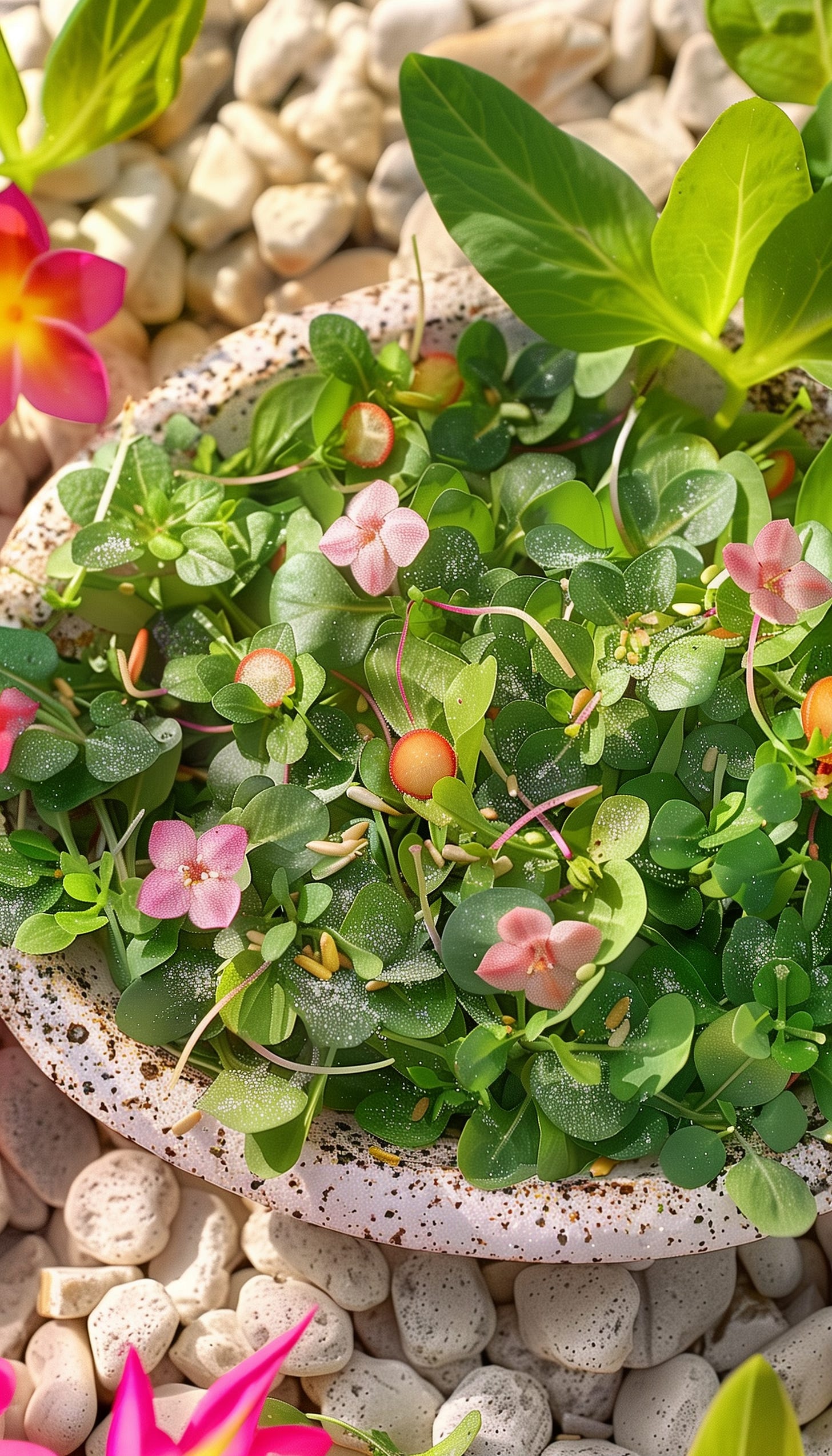There’s something magical about spending time in the garden with your child, sharing knowledge that’s been passed down through generations. Today, my daughter and I had one of those special moments as we explored the benefits of a seemingly humble plant—purslane. Guided by a video from the Black Forager on Instagram, we learned how to identify this nutritious green, and it brought back memories of my own mother teaching me about its incredible health benefits.
A Moment in the Garden:
The sun was shining, and the garden was alive with the colors of late summer. As we wandered through, I pointed out the small, succulent leaves of purslane growing among the other plants. I could see the curiosity in my daughter’s eyes as I explained that this “weed” was actually a powerhouse of nutrition. We watched the Black Forager’s video together, where she expertly showed us how to identify purslane, making it feel like a treasure hunt right in our backyard.
As we picked a few leaves, I couldn’t help but share a story from my own childhood. My mom had often told me about purslane and its many health benefits, and now, here I was, passing that knowledge on to my daughter. It felt like a full circle moment—rooted in tradition and love.
Health Benefits of Purslane:
My mom always emphasized the health benefits of purslane, and here are five reasons why this plant deserves a place on your plate:
Rich in Omega-3 Fatty Acids:
Purslane is one of the few plants that contain high levels of alpha-linolenic acid, a type of omega-3 fatty acid that’s crucial for heart health.Packed with Antioxidants:
This green is loaded with antioxidants like vitamins A, C, and E, which help protect your cells from damage and support overall health.High in Minerals:
Purslane is a great source of essential minerals such as magnesium, potassium, and calcium, which are important for maintaining strong bones and regulating blood pressure.Low in Calories but Nutrient-Dense:
Despite being low in calories, purslane is nutrient-dense, meaning it provides a lot of nutrition without adding much to your calorie count—a perfect addition to a healthy diet.A Source of Dietary Fiber:
Eating purslane can help support digestive health due to its high fiber content, which aids in digestion and helps maintain a healthy gut.
Historical and Cultural Significance:
Purslane has been used in various cultures for centuries. In ancient Greece, it was prized not only as a food but also as a medicinal plant. The Greeks believed it had the power to soothe inflammation and heal wounds. In Indian Ayurveda, purslane is considered cooling and is used to balance the body’s doshas. Across the world, in Mexico and the Middle East, purslane has been a staple in traditional dishes, celebrated for both its flavor and its health benefits.
A New Experience:
After learning about purslane, my daughter was eager to try it for herself. The moment she put a small leaf in her mouth, her eyes lit up with surprise at its slightly tangy, lemony flavor. It was a joy to witness her first taste of something so new and full of history. You can watch the video of her trying purslane for the first time here.
Conclusion:
Teaching my daughter about purslane was more than just a lesson in gardening—it was a way to connect with our heritage and share the wisdom passed down through generations. Purslane may be small and often overlooked, but it’s a reminder of the incredible power that nature holds and the importance of passing on that knowledge. Whether you’re foraging in your garden or at the local market, I hope you’ll consider adding this nutritional powerhouse to your meals and creating your own special memories.







